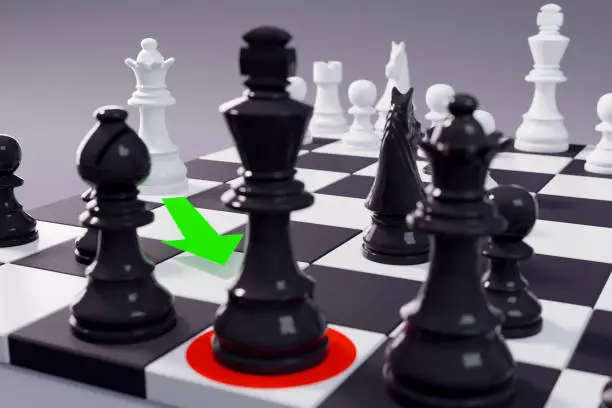How to Play Against the Sicilian Defense?
Contents
Chess, a timeless game of intellect and strategy, is a realm where each move can shape the destiny of the battle. If you’ve found yourself facing the formidable Sicilian Defense, worry not! In this guide, we’ll delve into the art of countering this chess classic and unveil a secret weapon: niche lines.
Unveiling the Sicilian Defense
Before we plunge into the world of niche lines, let’s acquaint ourselves with the cunning adversary that is the Sicilian Defense. Originating from the picturesque island of Sicily, this opening move by black, where the pawn advances to c5, sets the stage for a dynamic and asymmetrical clash. Its allure lies in its ability to unbalance the game, creating opportunities for both sides.
The Basics of Sicilian Defense
The Sicilian Defense opens with a seemingly innocuous move—black’s pawn advances to c5. This modest yet crafty maneuver lays the groundwork for a rich and complex struggle. White, now faced with various responses, must tread carefully to avoid potential pitfalls.
Popular Variations: Open, Closed, and the Dragon
Within the labyrinth of Sicilian Defense, different variations add layers of complexity. The Open Sicilian, Closed Sicilian, and the notorious Dragon Variation are diverse paths that players might traverse. Each variation introduces its own set of challenges and strategic nuances.
The Power of Niche Lines
Now, let’s shift our focus to the heart of our strategy—specializing in a niche line. Picture this as a secret passage through the Sicilian labyrinth that only a few have ventured into. This unconventional approach can catch your opponent off guard, turning the tide in your favor.
Why Niche Lines?
Think of niche lines as your chess superpower. They inject an element of surprise, capitalizing on your opponent’s lack of familiarity. It’s like having a secret move up your sleeve, ready to be unleashed when the time is right. This strategic advantage can significantly impact the outcome of the game.
Selecting Your Niche Line
The world of niche lines is vast, offering an array of unexplored paths. Your task is to research and identify a line that aligns with your playing style. Consider your strengths and weaknesses, and choose a niche that resonates with your strategic preferences.
Learning and Mastering Your Chosen Line
Once you’ve chosen your niche, it’s time to dive deep. Let’s consider an example: the Smith-Morra Gambit, a niche line in the Sicilian Defense where white sacrifices a pawn for rapid development. Study the ins and outs, analyze key positions, and familiarize yourself with the tactical motifs unique to your chosen line. Utilize chess databases and resources to refine your understanding.
Tactics and Strategies in Niche Lines
With your niche line in hand, it’s time to explore the tactical landscape. This section will guide you through the art of exploiting weaknesses, setting traps, and employing strategic principles specific to your chosen niche line.
Exploiting Weaknesses
Imagine you’ve chosen the Alapin Variation, a niche line involving an early c3 move. Look for weaknesses in your opponent’s pawn structure and piece placement. Identify squares that become vulnerable due to their adherence to standard Sicilian patterns.
Tactical Traps and Combinations
Niche lines often conceal unique tactical traps and combinations. Let’s take the Hyper-Accelerated Dragon as an example. Recognize patterns such as the “Fried Liver Attack” that can catch your opponent off guard. Surprise them with unexpected moves leading to favorable positions.
Maintaining Flexibility
While the niche line is your specialty, don’t forget the importance of adaptability. Consider a scenario where your opponent deviates from standard responses in the Accelerated Dragon. Stay nimble, adjusting your strategy to exploit their choices effectively.
Practical Tips for Your Chess Arsenal
As you embark on your journey with niche lines, consider these practical tips to enhance your gameplay and ensure success.
Timing is Key
Revealing your specialized knowledge at the right moment is crucial. Imagine you’ve chosen the Closed Sicilian as your niche line. Surprise your opponent when they least expect it, creating a strategic disruption in their plans.
Adapting to Opponent’s Responses
Chess is a dance of moves and countermoves. Anticipate how your opponent might react to your niche line, and be prepared to adapt accordingly. Consider the Alekhine Variation: if your opponent opts for a passive response, exploit the weaknesses in their setup.
Seek Feedback and Improve
Chess is a lifelong learning journey. Play practice games incorporating your niche line, seek feedback from experienced players, and continually refine your skills. Improvement is a constant process.
Common Mistakes to Sidestep
To master the art of playing against the Sicilian, steer clear of these common pitfalls that can undermine your efforts.
Over-reliance on a Single Niche Line
While your niche line is a potent weapon, relying on it exclusively can lead to predictability. Consider the example of the Morozevich Variation: keep your opponents guessing by occasionally diversifying your strategies.
Failing to Adapt
Chess is a dynamic game, and opponents will adjust their tactics. Failing to adapt to their changes can leave you vulnerable. Stay attentive and responsive throughout the game.
Neglecting Broader Chess Principles
While niche lines offer a unique approach, they should complement, not replace, broader chess principles. Ensure your overall game strategy remains well-rounded and balanced.
Case Studies and Examples
Let’s delve into real-life games where players successfully wielded niche lines against the Sicilian. Through analyses of critical moments and key moves, we’ll unravel the strategies that led to victory or defeat.
Learning from Victories and Defeats
Consider a game where a player expertly used the Wing Gambit against the Sicilian. Analyze both victories and defeats to understand the intricacies of niche lines. Each game holds valuable lessons for honing your skills.
Practice and Application
Armed with knowledge, it’s time to put theory into practice. Incorporate your niche line into your regular chess routine, playing practice games to refine your understanding and elevate your gameplay.
Seeking Mastery Through Practice
Practice makes perfect. The more you immerse yourself in games utilizing your niche line, the more adept you’ll become at unleashing its full potential.
Conclusion
In the grand tapestry of chess, countering the Sicilian Defense requires strategic finesse. By specializing in a niche line, you transform the game into a battleground of surprises. Embrace the element of unpredictability, exploit your opponent’s vulnerabilities, and revel in the thrill of checkmate. As you embark on this chess journey, remember: the secret to success lies not just in mastering the game but in mastering your unique approach to it. Happy playing!








